Episode 8:
Navigate beyond with Lucie Phillips, Gareth Davies and Harold Hendrickx
See all episodes
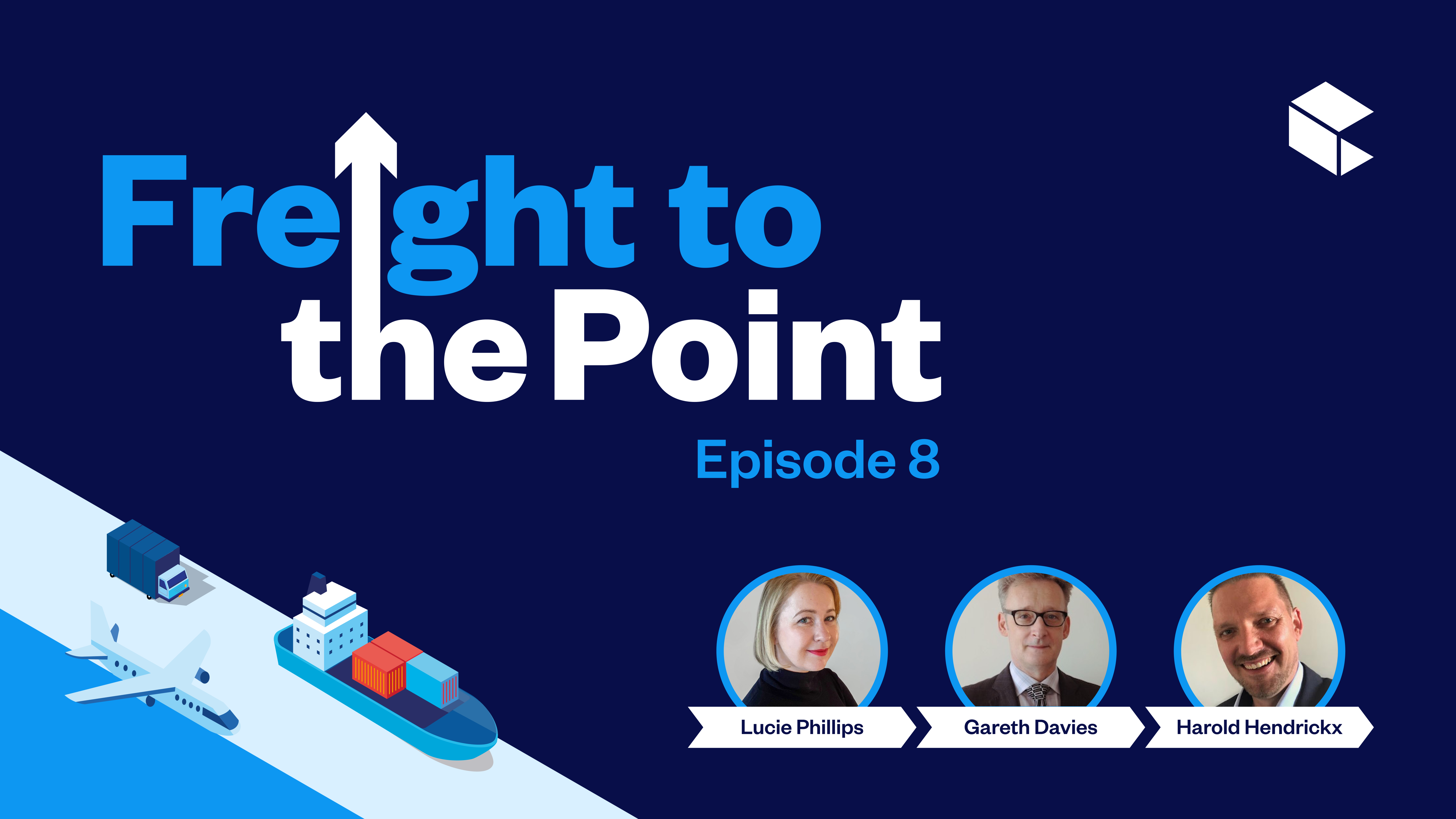
Over the past two years, challenges such as COVID-19, rising costs and port congestion have rocked the supply chain industry.
With all of these added complexities, how can businesses stay on top of their supply chain and still optimise performance with their suppliers?
Lucie Phillips, Zencargo’s Chief Operations Officer, is joined by Gareth Davies, Head of Global Logistics at Lenovo, and Harold Hendrickx, Director of Global Procurement Enablement & Transformation at DS Smith, to discuss how businesses can use technology to understand and align with their suppliers.
They discuss:
- The importance of visibility in the supply chain
- How businesses should prioritise which problems to tackle first
- Why all teams in the supply chain need to be aligned on decisions
Resources
- How experts at Lenovo and DS Smith tackle supply chain disruption: https://www.zencargo.com/resources/supply-chain-disruption-advice-from-experts/
Listen to the next episode now

Hello and welcome to Episode Eight of Freight to the Point. This week we’re featuring one of our Navigate sessions, ‘In conversation: Complexity in the supplier base’ from when we hosted Navigate back at the end of April.
To give you a bit of background, our quarterly navigate conferences invite leading supply chain experts to talk about what is happening in the industry and how their predictions for the future are panning out. For this session, we invited Lucie Phillips, the Chief Operations Officer from Zencargo, Harold Hendrickx, the Director of Global Enablement and Transformation at DS Smith and Gareth Davies, the Head of Global Logistics at Lenovo, to talk about managing suppliers during a time of constant change.

Good afternoon, everyone. It’s an absolute pleasure to be here again for my third Navigate event and an even greater pleasure to be kicking off the sessions today. So what are we going to be talking about in this session? Well, a nice, easy one to get started off, complexity in supply chain. And as if it wasn’t complex enough already with all the additional challenges and stresses on the market over the past 12 to 18 months, this has led to even more unpredictability in what we’ve been facing, in lead times, in rising costs. And so today we’re going to get into the nitty gritty of how we can tackle this.

 Thank you Gareth, great to have you with us. And our second panel is Harold Hendrickx, who is the Director of Global Enablement and Transformation at DS Smith. So Harold, over to you.
Thank you Gareth, great to have you with us. And our second panel is Harold Hendrickx, who is the Director of Global Enablement and Transformation at DS Smith. So Harold, over to you.
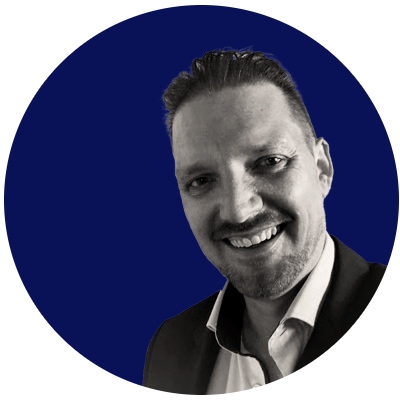
 Okay. Well let’s, clearly you guys have got a lot of fantastic experience to help our audience with, so let’s start and get into the discussion. We’re going to solve everyone’s problems in the next 25 minutes, I’m sure. No pressure. So first question, with so many moving parts, quite literally moving parts in supply chain, what do you feel are the core ingredients that we should be looking at to try and get a clear view of what’s actually happening within supply chain across those different movements? Let’s go to Gareth first. What are your views here?
Okay. Well let’s, clearly you guys have got a lot of fantastic experience to help our audience with, so let’s start and get into the discussion. We’re going to solve everyone’s problems in the next 25 minutes, I’m sure. No pressure. So first question, with so many moving parts, quite literally moving parts in supply chain, what do you feel are the core ingredients that we should be looking at to try and get a clear view of what’s actually happening within supply chain across those different movements? Let’s go to Gareth first. What are your views here?
So, I think the most obvious answer is visibility and visibility systems. I think the problem is that that’s a relatively simple word that’s actually incredibly difficult to define, let alone implement. So for example, in our world you’ve got, visibility into parts availability and that’s your tier 4, 5, 6 suppliers that may not even be on their way to you yet, visibility of potential orders, as well as firm orders, your SOP process and management, visibility to quality issues or any potential network disruptions, and then visibility to trends. And that list just goes on and on. And of course, all of that ultimately at some point should be linked.
So I think to give a simple, a more simple response to the question, if we focus on one aspect and I’ll just choose finished goods that are coming out of the factories and on route to suppliers. So for us, we’ve put a lot of effort into building a network resilience dashboard and that feeds from GPS, from satellite tracking APIs, EDIS and it overloads a kind of dynamic network. So those two things together give us a pretty good view on numbers and stock and location, and also headlights of potential and possible issues. And then the physical network piece allows us to deploy contingency plans as needed and they will feed into our internal visibility systems and customer interfaces. And I think it’s critical to remember that everybody needs to have sight of the issues, including the customers.

 For certain. And so looking at that visibility and breaking it down into blocks so that you can then create a kind of one centralised view, essentially, that you can buy everyone into. Is that what you’re… If I were to summarise, make it sound very simple, but yeah, that is what you’re kind of, you were aiming for.
For certain. And so looking at that visibility and breaking it down into blocks so that you can then create a kind of one centralised view, essentially, that you can buy everyone into. Is that what you’re… If I were to summarise, make it sound very simple, but yeah, that is what you’re kind of, you were aiming for.

 Have you seen similar things from your side, Harold? What other things have you experienced?
Have you seen similar things from your side, Harold? What other things have you experienced?
Yeah. I think that this, driving that standardisation and having a common standard, understanding of how the visibility should look like is essential. So, you might have different teams looking at different steps of the process or different elements in the process, but you need a single ownership and you need to have clarity on who makes the decision on driving and setting that standard, because if you don’t, then those elements will not be connected and you will not have your end to end visibility.

 Oh, definitely not. And particularly in supply chain, you want to drown out that noise as much as you can. Yeah. Agreed. So to summarise then, if we’re thinking then, it’s kind of inputs to outputs, it’s around visibility, standardisation of what you want, ownership and alignment, which if you can get those ingredients we can drive the visibility and control and ultimately focus, as you said Harold, that will help get a better view of what’s happening within the supply chain. So if we’re thinking about that then, I mean, how do you prioritise though? Because that’s a lot and where do you start in that chain? Harold, let’s start with you this time. How would you go about prioritising, tackling that, what could seem quite an insurmountable challenge to some people?
Oh, definitely not. And particularly in supply chain, you want to drown out that noise as much as you can. Yeah. Agreed. So to summarise then, if we’re thinking then, it’s kind of inputs to outputs, it’s around visibility, standardisation of what you want, ownership and alignment, which if you can get those ingredients we can drive the visibility and control and ultimately focus, as you said Harold, that will help get a better view of what’s happening within the supply chain. So if we’re thinking about that then, I mean, how do you prioritise though? Because that’s a lot and where do you start in that chain? Harold, let’s start with you this time. How would you go about prioritising, tackling that, what could seem quite an insurmountable challenge to some people?
Well, it starts with the intent. What do you want to achieve? What do you want to see as a desired outcome? What is it what you want the process to deliver? I think that is setting that direction, a crystal clear understanding what the intent is and what is the purpose of doing this, needs to be crystal clear because that derives from that derives the requirements for any standardisation, visibility and also technical requirements for any systems to use. And you see often, that intent or the desired outcome is not specific enough and it’s too wide. And what you then end up is that, companies are bringing more processes, which are not aligned or more technology. And from my experience, often companies don’t need more technology, they need less technology, but it has to be smarter and fit for purpose.

 Indeed, yeah. No, for sure. Too much technology can make things too complicated at times when it’s meant to be making stuff easier for you. No, I completely agree. And so Gareth from your perspective, what have you found effective in the past when you’ve been prioritising on what to tackle first?
Indeed, yeah. No, for sure. Too much technology can make things too complicated at times when it’s meant to be making stuff easier for you. No, I completely agree. And so Gareth from your perspective, what have you found effective in the past when you’ve been prioritising on what to tackle first?
So I think, I mean, when we look at certainly the last two years with the pandemic and all the issues that that’s created, there’s been a real need to put priorities and to try and simplify things and to try and drive the outputs as Harold was just talking about. The problem I think that we’ve got in many aspects of supply chain and certainly in logistics, is that we’ve had to add complexity. We’ve had to add more carriers because the capacity has been reduced. We’ve had to add more gateways because we have city lockdowns or congestion. We’ve had to make sure that we’ve got multimodal solutions when previously, maybe companies only have one or two. And we’ve got to be able to juggle between the two or three or four of those different gateways, different carriers. So we added, I think as an industry, we’ve added a lot of complexity. And I think again, it dovetails into to Harold’s point, too much information kind of then starts stalling.
So, our focus for sure and one of the things that we found very successful, was to look at process and to look at, “Who is best placed to make decisions?”, because decisions need to be made fast. So who is best placed to kind of make those decisions? How do we make them quickly? And what do we base them on? And again, to Harold’s point, you can’t go through a transfer of information, you’ve got to decide, “What is my source that enables me to make these decisions and I’ll use that?” And if it transpires that you maybe made a wrong decision, then fix the source, but keep that piece simple.
So we’ve focused on that element of our process, trying to reduce the complexity and that trying to make sure that the ownership is clear, trying to make sure that people understand against what kind of outputs from various different systems we’re going to make those decisions on. And then we also try to put hierarchy into that process. And again, just as a simplification piece, just to help us prioritise. So maybe, this type of, this volume coming out goes to this carrier, and then we move it down and we go to this carrier, or it goes to this MOT, or it goes to this gateway, so that the guys actually executing this kind of have the ability to use that matrix and prioritise almost by default and maybe lessen some of the other influences that would cause them to second guess themselves or to really establish it.

 So, that’s interesting. So if I was to reframe that slightly, so you’re looking at how you can enable more people within the process. So using the information you have to essentially streamline it. And you might make the wrong decision, but that’s okay, as long as you’re building into the process, the checkpoints to make sure that you’ve made the decision based on the right data or maybe you need to just tweak it. Would that be an accurate way of summarising it?
So, that’s interesting. So if I was to reframe that slightly, so you’re looking at how you can enable more people within the process. So using the information you have to essentially streamline it. And you might make the wrong decision, but that’s okay, as long as you’re building into the process, the checkpoints to make sure that you’ve made the decision based on the right data or maybe you need to just tweak it. Would that be an accurate way of summarising it?

 No, that’s really useful advice. Thank you. So just to come back to something that you said there, Harold, around, figure out what you want first and what are your goals? What advice would you give to people and they might be sitting there going, “But I’ve got 50 goals.” How do you prioritise even between the goals? How do you make that first step?
No, that’s really useful advice. Thank you. So just to come back to something that you said there, Harold, around, figure out what you want first and what are your goals? What advice would you give to people and they might be sitting there going, “But I’ve got 50 goals.” How do you prioritise even between the goals? How do you make that first step?
Yeah, we all understand that everything is a priority one. So that’s what we all recognise. But what I learned in my 20 years of military service is that, you need to have an intent. So what is the direction of what you want to achieve? And it can be that several goals are a tied to that intent, in business life we call it the purpose or statement or mission, but you need to have a common objective to make sure that everybody understands that, “Right, this goal is in supportive of that intent.” If it’s not, you should not do it. I think that is fairly easy, or at least it should be a lower priority.
And I think coming back to Gareth around the decision making is also clear, because if you have that intent or the purpose set in your company, then not only at a senior leadership level, but all the way through line management, then people understand, the decision that they’re making today will need to be in line with what the intent is, what we’re trying to achieve as a company or as a function or as a team.
And I think that is crucial to understand, A, what is the actual, the intent and the purpose of what we’re trying to do here, it’s making sure that you can have a proper priority setting of all the goals that you have and also encourage local and line management leaders to make decisions on their own, in their own responsibilities and their own areas of accountability in line with what is best to achieve that intent. That is a best practice. And you often, you don’t see that because at other areas of the business, if that intent is not clear, they go into a different direction with a different set of goals, rather than to combine, let’s say, your thinking power and your decision power to reach that intent and purpose.

 Right. So, let’s assume that we’ve set our goals, we’ve built the process within the team internally, we know what data we’re going to be looking at, ideally everyone’s on the same path. But what about the other players within the supply chain, how do you make sure that you’ve set these principles and processes from the top within the organisation, but obviously it’s not just about the internal team, there’s so many different players within the supply chain, how do you make sure that this is flowing through and that we are all on one page, Gareth?
Right. So, let’s assume that we’ve set our goals, we’ve built the process within the team internally, we know what data we’re going to be looking at, ideally everyone’s on the same path. But what about the other players within the supply chain, how do you make sure that you’ve set these principles and processes from the top within the organisation, but obviously it’s not just about the internal team, there’s so many different players within the supply chain, how do you make sure that this is flowing through and that we are all on one page, Gareth?
So I’m not sure. I mean, obviously there are always top down directives, top down decisions and you’ve got to make sure they’re cascaded through to the team. But I think that kind of layer of mid-management has the opportunity and the obligation perhaps to simplify this. And again, if I look at how we’ve tried to approach things, the end result, the end objective has got to come from the top. But I would look at setting that, but how we get there and the process needs to kind of come from the ground up.
And again, if I focus on the last two years, you’ve got people working remotely under tremendous pressure, they’ve got all sorts of things, a myriad of things that they’re dealing with. And in that environment, they know better than I ever will. What is slowing them down or what is aiding them, where they need help and where a process needs to be changed to cope with today’s challenges, which are very different from four or five years ago. And so, we kind of take that approach and if we find there’s a block, then we tend to look at, “Well, how can we still achieve the objectives, but make those tweaks to a process? What is slowing that down and is that too many layers of bureaucracy, but what’s slowing that down?”

 And so practically, how do you make that work, in that you say you lean on the middle management to drive that kind of bottom up approach, or can you talk to us about how you’ve done it?
And so practically, how do you make that work, in that you say you lean on the middle management to drive that kind of bottom up approach, or can you talk to us about how you’ve done it?

 Great, thank you. And I mean, Harold in your role, this must just be a daily occurrence of how do you get people to follow the vision, how do you get them to be part of the change? So, what have you seen that’s worked for you in your role?
Great, thank you. And I mean, Harold in your role, this must just be a daily occurrence of how do you get people to follow the vision, how do you get them to be part of the change? So, what have you seen that’s worked for you in your role?
Yeah, I think what Gareth said, I couldn’t agree more. I think it’s, that it requires leadership. So, the top leadership needs to limit themselves indeed, to sending the directions, and leave it to that. And that is often hard, because then you need to make sure that you have an adaptive, situational, motivational, inspirational leadership style to unlock that potential of that middle management to come up with the proper solutions from the modern days. And I think that is a lessons that I see often that needs to be learned that the dare to delegate and ask for help is often not seen as a strong leadership. But to be honest, that is strong leadership. If you say, “Look, this is what we want to achieve, this is our intent. I need your help here to come with the best answer of doing that. Can you please tell me what you need?” And then you go into a supportive role, that is hard core senior leaders.
Often people think that strong leadership is about the orders, telling people what to do, that’s and that’s 180 degrees opposite of what I would consider to be strong leadership. Again, that’s 20 years of military experience. People think like, “Oh, so that’s Harold shouting orders.” That’s not, it’s the first thing that you learn on the academy is that you don’t know it. You need to listen to your people, like Gareth just said. So, the definition of strong leadership needs to be in people’s minds and making sure that they understand that it’s their responsibility to set the direction and the intent and the purpose of doing things, but how to achieve that is definitely something that they need to open up the, and giving space to middle management and leadership to come up with that proper solution.
 |
 I love, dare to delegate. I feel you’ve got some sort of bootcamp course in the future, Harold.
I love, dare to delegate. I feel you’ve got some sort of bootcamp course in the future, Harold.

 Everyone here is going to sign up for us. So I’m very excited for you.
Everyone here is going to sign up for us. So I’m very excited for you.

 No, that’s fantastic. Thank you. Yeah. So what I’m hearing is based on the views from both around, don’t just push it top down, you got to build it bottom up and there’s different ways you can tackle that. But ultimately, leading on your teams, listening, delegating and asking for help is the way you’re going to land it within the wider parts of the supply chain. So, before we jump to the Q&A from the audience, the last question I have for you both is, if you have one piece of advice, one thing that you want everyone here today to take away who might be feeling a little overwhelmed by the complexity of their supply chain, what would that be? What should they be taking away as their one golden nugget to remember from this session. Harold, I’ll let you go first. Hopefully it’s not same one as Gareth.
No, that’s fantastic. Thank you. Yeah. So what I’m hearing is based on the views from both around, don’t just push it top down, you got to build it bottom up and there’s different ways you can tackle that. But ultimately, leading on your teams, listening, delegating and asking for help is the way you’re going to land it within the wider parts of the supply chain. So, before we jump to the Q&A from the audience, the last question I have for you both is, if you have one piece of advice, one thing that you want everyone here today to take away who might be feeling a little overwhelmed by the complexity of their supply chain, what would that be? What should they be taking away as their one golden nugget to remember from this session. Harold, I’ll let you go first. Hopefully it’s not same one as Gareth.

 Fantastic. Thank you. And Gareth?
Fantastic. Thank you. And Gareth?
I would say, refocus your focus and do this all the time. You’ve got a finite amount of time. You’ve got a finite amount of energy and you really need to be applying that to the things that you can influence, the things that you can do something about. So, you’ve got to be constant in looking at what are the absolute fundamentals that I need to do. And I think, to echo the points that Harold has already made about priorities, I think that’s a good way of also making sure that you’re aligned with your stakeholders, your customers, but certainly your management team and your peer group around what are those priorities? Is it cost? Is it segment? Is it country? Is it volume? What are the key priorities?
And if you’ve then got the ability to look at your own focus items and know what the priorities are, then pretty much every minute that you are able to spend, you are going to be efficient. You’re not going to fix everything. There’s going to be a 100 curve balls, a 100 challenges and you’re just going to waste energy and time trying to solve everything. And if you’ve got your focus, your priorities and everybody alongside you has got the same, then hopefully that’s kind of a team mentality that we’re in through. But I would say, refocus your focus, make sure that your energy and effort is being spent on things you can influence.

 And I thought we were good with dare to delegate. Refocus your focus is also a great tagline. So you both come up trumps for me today. Thank you very much.
And I thought we were good with dare to delegate. Refocus your focus is also a great tagline. So you both come up trumps for me today. Thank you very much.

 Fantastic. Thank you. Okay, well, let’s jump into the questions then that we’ve had from the audience. So first one, which I think is a great question is, do you see supply chain becoming more complex, heaven forbid, but do you see it becoming more complex? And if so, what do you think we should be thinking about to manage added complexities in the future?
Fantastic. Thank you. Okay, well, let’s jump into the questions then that we’ve had from the audience. So first one, which I think is a great question is, do you see supply chain becoming more complex, heaven forbid, but do you see it becoming more complex? And if so, what do you think we should be thinking about to manage added complexities in the future?
So do you see the supply chain going more complex? Yes. And I think Gareth also elaborate on that based on the COVID crisis. You can see, the world is getting more dynamic. And obviously, we have crisis on crisis and a lost of factors influencing that. Also, when I work with manufacturing companies to reduce that complexity, it is also around making sure that you be first, be right and be ready. And be first to arrive at your customer, because if you don’t then obviously your competition will. You need to make sure that you are first, but you also need to be right. So that means law and legislation it needs to, fulfilling the specifications of the customer. You need to be sustainable and ideally circular.
So you need to do things in the right way as well, and you need to be ready. And that means that decision making needs to be crystal clear. You cannot stack up all the scenarios that might happen in the future crisis because the one scenario that you don’t describe will happen. So, don’t waste your time on writing scenarios, making sure that you have a proper provision of intelligence information and the governance and decision making process so that you can, it can be quickly and be ready to make your proper decisions on doing that.

 Fantastic. Thank you. And what about from yourself, Gareth? Do you know something we all don’t know and it’s actually going to get easier or do you also think it’s going to become more challenging?
Fantastic. Thank you. And what about from yourself, Gareth? Do you know something we all don’t know and it’s actually going to get easier or do you also think it’s going to become more challenging?
I mean, Harold’s touched on a couple of great points. You’ve got things like the circular economy, you’ve got sustainability. These just add a layer of complexity, even if we didn’t have any of the problems in the last two or three years. But when you do add on those constraints and various issues and any of the other things that we’re facing in the world today, and people are looking at sure-shoring, which I kind of like that frame now, rather than near-shoring or far-shoring, it’s kind of sure-shoring to make sure they’ve got the supply.
But my view on how to tackle it and how to give people a visual, I guess, is I think supply chain is done, for me. A chain indicates or gives the impression, when you think of a chain you think of something that’s kind of linear or at best, maybe circular, right? And I think we now talking about supply network. So, it’s no longer kind of manufacturing to logistics to and moving along a chain. It’s every aspect needs to be connected to every other aspect. So if you draw it and start drawing all those intersecting lines, that will show you that it’s becoming more complicated, but it also shows you what have I got to do to make sure that I’m seeing upstream forecasts because I need it and what am I doing to see parts distribution, and what am I doing to see manufacturing capacity? And what am I doing to see other aspects that maybe five years ago I didn’t even think about, I didn’t need to do my job, I just picked up the box and I delivered it.

 Great. Fantastic. And there’s another question here, which I think is a great one for you Gareth around, how many different solutions are you using for one process? Because you’ve talked about the network and you’ve got obviously teams all over the world. So, how many different solutions are you using? The example given here, was for example, booking management, but do you have different setups and different global locations? How do you manage to keep everybody in one unified setup?
Great. Fantastic. And there’s another question here, which I think is a great one for you Gareth around, how many different solutions are you using for one process? Because you’ve talked about the network and you’ve got obviously teams all over the world. So, how many different solutions are you using? The example given here, was for example, booking management, but do you have different setups and different global locations? How do you manage to keep everybody in one unified setup?
It’s incredibly difficult. So for us, we’ve got multiple product lines that we’re distributing. We’ve got multiple segments that we’re distributing to. We’ve got multiple terms of sales under which we sell under. We’ve got a global footprint of over 30 manufacturing facilities, so the products can actually originate from multiple locations. So, we’re focused right now on kind of what we call a one Lenovo platform and we’re also focused on that dynamic sourcing so that we can start getting better visibility of where is most appropriate to push this product out from.

 Great. Thank you. And then a question here for you, Harold, because you talked a lot about the technology piece and how it’s important to make sure you’re using the right technologies for the right purposes. But what type of questions should companies be asking before they choose a technology?
Great. Thank you. And then a question here for you, Harold, because you talked a lot about the technology piece and how it’s important to make sure you’re using the right technologies for the right purposes. But what type of questions should companies be asking before they choose a technology?
It’s really about identifying your needs and requirements. So functional needs and requirements, what do you want to achieve as more of the process oriented. Again, it starts with the process. What do you want it to deliver as an outcome? What do you want to achieve? And that can be broken down into various sub-proceses supporting that main supply process, for instance. But you need to start with that.
Then the second step would need to be translated into technical requirements. And that has to be in that order to make sure that you have a system that supports your process. I think we all know that the technology is there, but it might not be helping us. As a matter of fact, I think we all have examples in our work lives and maybe even in our private lives, that technology is working against you rather than enabling you to accelerate or to excel into a certain process. And that is because people are choosing the technology as an entry point while it should be the process.

 Fantastic. Thank you so much. Well, I wish we could continue this conversation, but unfortunately we are out of time. And so, it’s my pleasure to thank you both so much for your time and your insights. A lot of fantastic insights for our audience to take away today. Hopefully we’ve created a little bit of light in the chaos and the complexity for our, or we sold it for everybody, one of the two, I’m not entirely sure. But we’ll find out from feedback from the event, but thank you so much, Gareth. Thank you, Harold. It’s been a pleasure and I’ll be handing back over to Helena now.
Fantastic. Thank you so much. Well, I wish we could continue this conversation, but unfortunately we are out of time. And so, it’s my pleasure to thank you both so much for your time and your insights. A lot of fantastic insights for our audience to take away today. Hopefully we’ve created a little bit of light in the chaos and the complexity for our, or we sold it for everybody, one of the two, I’m not entirely sure. But we’ll find out from feedback from the event, but thank you so much, Gareth. Thank you, Harold. It’s been a pleasure and I’ll be handing back over to Helena now. Thank you for tuning into our episode this week. What an interesting conversation, if you would like to hear more like this, we’ll be hosting Navigate again on the 7th of July at 2:00 PM, BST. Simply sign up via our webpage, navigate.zencargo.com. If you have any feedback on this week’s episode, please also reach out to us on LinkedIn, we love to hear from you. And until next time, goodbye.
Thank you for tuning into our episode this week. What an interesting conversation, if you would like to hear more like this, we’ll be hosting Navigate again on the 7th of July at 2:00 PM, BST. Simply sign up via our webpage, navigate.zencargo.com. If you have any feedback on this week’s episode, please also reach out to us on LinkedIn, we love to hear from you. And until next time, goodbye.
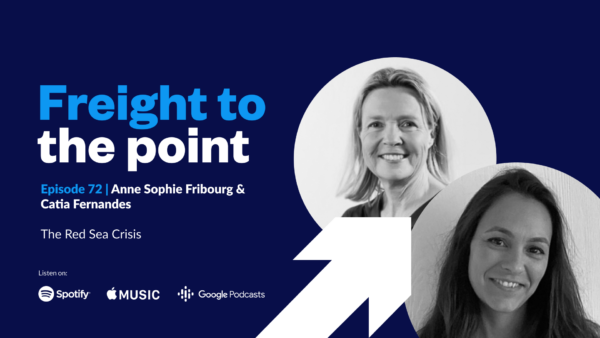
Episode 72: The Red Sea Crisis
In the latest episode of Freight to the Point, we’ve featured our most rec...
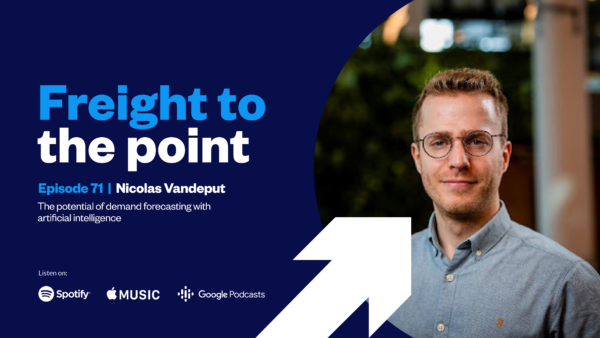
Episode 71: The potential of demand forecasting with artificial intelligence
In the most recent instalment of Freight to the Point, Lucie Phillips, Zen...
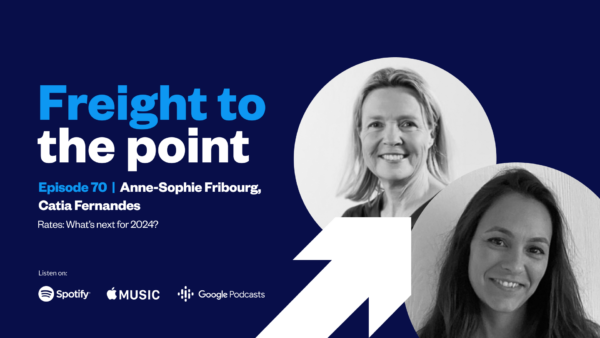
Episode 70: Rates: What's next for 2024?
As we prepare for the year ahead, it's crucial to consider the three pillars...

